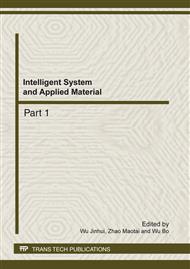p.724
p.729
p.734
p.739
p.744
p.749
p.754
p.759
p.763
Analysis on Static Stiffness of Synchronization Torsion Bar Based on Finite Element Method
Abstract:
Synchronization torsion bar is a key part in independent and dependent impression mechanism which ensures synchronization motion at both ends of blanket cylinder. Due to frequent action of the mechanism in high-speed printing, synchronization torsion bar would cause huge impact torque so as to affect parallel shifting of blanket cylinder and uniformity of printing impression. Based on structure features and force of synchronization torsion bar, finite element model of synchronization torsion bar was established by adopting structural mechanics and finite element method, then static stiffness of synchronization torsion bar was solved by adopting principle of minimum potential energy. The result of computation shows that the maximum torsion deformation of torsion bar in X direction happens at the left connection point. Because the deformation is very small, the bar can meet the requirements that blanket cylinder.
Info:
Periodical:
Pages:
744-748
Citation:
Online since:
February 2012
Keywords:
Price:
Сopyright:
© 2012 Trans Tech Publications Ltd. All Rights Reserved
Share:
Citation:


